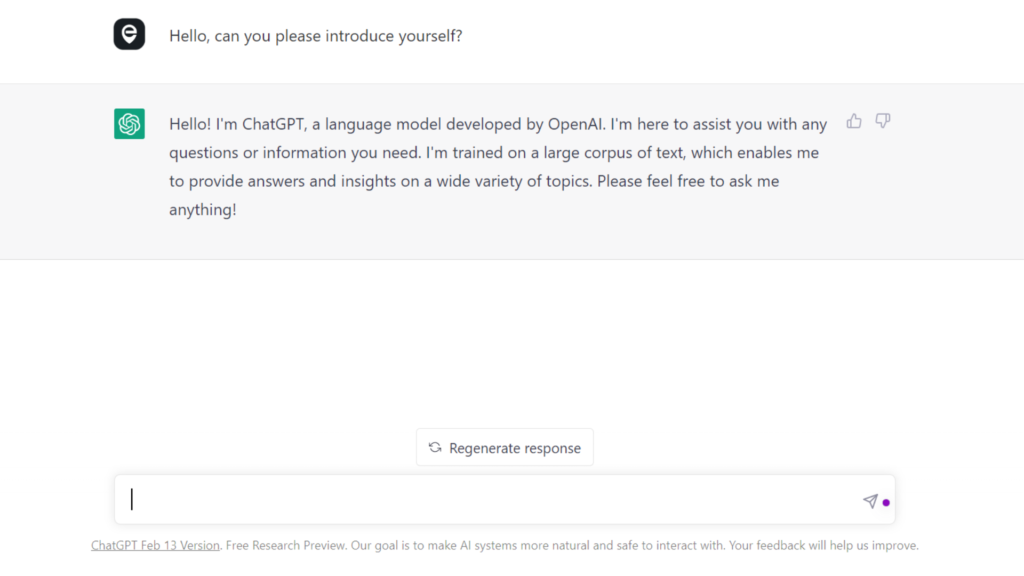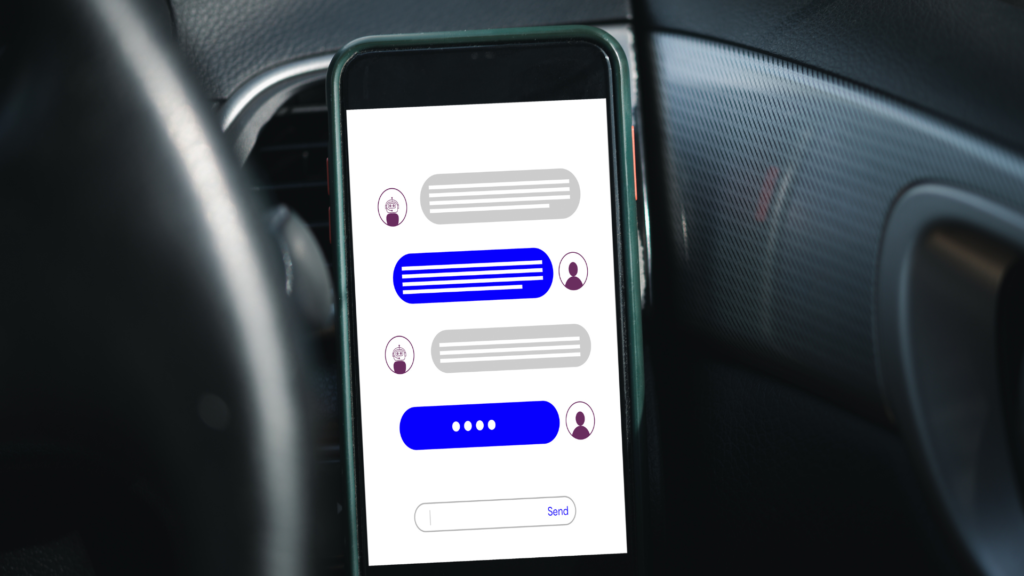
If you’ve been on LinkedIn recently, you’ve definitely noticed that a lot of posts discuss the latest artificial intelligence chatbot experiment, ChatGPT. ChatGPT is an AI chatbot developed by OpenAI.
So, what’s so different about OpenAI’s latest project? ChatGPT uses a powerful NLP (natural language processing) AI, GPT-3 language technology created by OpenAI, to mimic human-like responses and simulate human conversations. GPT-3 stands for Generative Pre-trained Transformer. It is an auto-regressive language model that employs deep learning to create text that resembles a human’s. This technique, introduced by OpenAI, has 175 billion linguistic parameters.
Since its launch, ChatGPT has impressed users in more than one way:
- Acting like a code partner, explaining and debugging issues for a human programmer
- Clearly explaining complex problems, such as programming techniques, using relevant examples
- Surpassing Google in providing in-depth answers to challenging “how to” queries
- Delivering high-quality essay writing
- Passing student exams with a high score
- Etc.
OpenAI is a 2015-founded nonprofit artificial intelligence research laboratory dedicated to researching, developing, and exploring the many ways in which safe AI can benefit humanity. The advantage of OpenAI API is that it can safely be applied to a variety of tasks involving generating or understanding natural language and code.
Why use OpenAI in retail?
OpenAI’s technology has been making waves in numerous industry sectors. Software and IT engineers have rapidly recognized the use of a human-like expert programming partner for debugging and code production.
The education sector has also been implementing GPT-3 tools to generate natural language explanations and support students of all levels. Finally, over 300 applications are reportedly providing GPT-3-powered search, conversation, text completion, and other advanced artificial intelligence services over their API in 2021, according to OpenAI, including The Walt Disney Company and Ancestry.com.
In a world where AI acts like a human being and can generate relevant, informative, and (mostly) accurate responses, it makes sense for e-commerce business owners to consider the benefits of artificial intelligence in retail.
eddress reviews the scenarios in which artificial intelligence can bring the e-commerce experience further.
Shopping experience personalization
Personalization is instrumental in tailoring the online retail experience and addressing the needs of individual visitors. In other to maximize the benefits of personalization, it is crucial to recognize the three categories that artificial intelligence can use to enhance the e-commerce shopping experience:
- A customer’s personal interests: What they viewed on the website, what they’ve bought, etc.
- Contextual data: This refers to information not relevant to the customer but to the context, such as calendar month, time of the day, economic situation, etc.
- Unique technical data about the visit: Which marketing channel drove the visit, which device is used, etc.
Artificial intelligence can access available information about these three categories to personalize the e-commerce experience for each customer. This can look like the following:
- Product recommendations based on relevant categories and on what customers who meet the same patterns purchased
- Page layout or email redesign to highlight relevant products and discounts for individual customers
- Personalized greetings and action prompts for identifiable customers; e.g., a customer who signs into their account could receive a deeper layer of personalized offers and content
So, where does OpenAI GPT technology bring personalization into play in e-commerce? Using ChatGPT, you can tackle these personalization needs, But retail businesses can also gather inspiration for the best personalization strategies for their venture. You can find excellent examples of how webocreation has utilized OpenAI for strategic tailoring purposes.
Additionally, you could also utilize OpenAI to develop the necessary code language for personalization or generate personalized content for product recommendations.
Streamlining e-commerce operations and logistics
Automating and streamlining your procedures can help you save money, enhance productivity, and save time. OpenAI GPT-3 ability to produce human-like texts (and code) and complete tasks can address automation processes in the retail industry:
- Automating routine processes: When it comes to warehouse and inventory data entry, for instance, e-commerce businesses can use OpenAI to save time and effort on repetitive tasks.
- Report automation: OpenAI can generate reports reviewing inventory stocks, warehouse productivity, etc.
- E-commerce content automation: Another lesser-considered role of automation is the ability to entrust product descriptions to OpenAI. When you need to produce content for hundreds or more products, artificial intelligence technology can save time and effort.
- Supply chain management: As John Malpass, former retail consultancy practice lead EMEA from Teradata, explains, “Integrating disparate data from the end-to-end supply chain and orchestrating it through automated analytics capabilities will enable new insights-based approaches to optimize and operate the supply chain.”
Cloud Evangelist, Marius Sandbu describes many automation cases for OpenAI, including the ability to implement API calls into the tool and develop more automation solutions specific to your retail business.

Enhancing customer service
Customer service is at the core of e-commerce success. Yet, it also remains one of the most time-consuming processes. The natural language processing abilities demonstrated by ChatGPT can revolutionize the interactions between customers and a business:
- Chatbot support: OpenAI can power your chatbot service, ensuring customers receive an accurate reply that looks like it’s been written by a human agent.
- Customer contact forms: OpenAi can also deliver Ai-power content for specific customer emails. You can check Lengow blog to see examples of how ChatGPT artificial intelligence delivers human-like customer service.
- Social media query replies: Chatbots are typically used in messenger tools, such as Facebook messengers. Yet, the OpenAI API can also enable retail businesses to address mentions and DM in other social media environments.
Ada, the Canada-based customer service automation expert, has recently partnered with OpenAI to enhance their existing chatbots. Indeed, OpenAI can help tackle the major part of customer communication through its conversational features, ensuring the customer’s intent is understood and addressed. It’s important to note that Ada has already been using ChatGPT technology for a while, utilizing the text in text out process to summarize customer service conversations and engage automatic processes without the need for multiple levels of approvals or validation.
Challenges to using OpenAI in the digital retail
The OpenAI API operates on a text rendering only, encompassing text entry and text response. As such, the retail sector can only use OpenAI to create tools that meet specific purposes within the “text in, text out” operation model.
According to Miguel Grinberg, developer at Twilio, GPT3 can produce text that is frequently indistinguishable from human-written language, but it is unable to comprehend any of it. Therefore, during a conversation, it may contradict itself or mention ideas that are perfectly grammatically correct but not supported by facts.
OpenAI GPT3 technology has been developed using machine learning algorithms. As a result, OpenAI has specifically produced an artificial intelligence model that doesn’t require additional fine-tuning or learning. GPT3 AI is the modern equivalent of a plug-and-play solution developed to perform off-the-shelf. While this is advantageous for e-commerce businesses that can’t afford to invest in training their AI solution, there is also a non-negligible issue. One of the crucial factors in making artificial intelligence relevant is its ability to maximize machine learning features to progress and embrace new trends or patterns. OpenAI GPT3 technology is, as of today, not equipped to adapt to new and emerging concepts and information. Nevertheless, we can rest assured that OpenAI will pursue its research with further language prediction models to address this issue.
Conclusion
OpenAI’s GPT3 technology is the first commercial release of this type of artificial intelligence. For e-commerce businesses, it is a no-brainer: The time-saving and value-adding benefits at different levels of retail operations are non-negligible. Customers can continue to feel cared for even when there is no human agent directly interacting with them. While it makes sense that GPT3 may one day evolve into GPT4 and 5 with the ability to train continuously and update its knowledge to cover new trends and events, this current generation of artificial intelligence can help bring retail companies to the next level.







